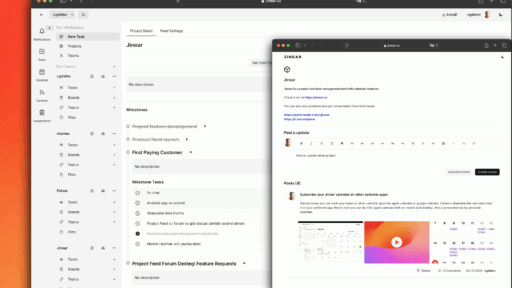The viral launch video landscape has fundamentally shifted in 2025. Interest-based algorithms now prioritize engagement over follower count, creating unprecedented opportunities for new brands to achieve massive reach. This guide reveals the data-driven frameworks and proven strategies that separate viral successes from expensive failures.
After watching technology evolve for 18 years and analyzing the most successful viral campaigns of 2024-2025, I’ve identified the critical patterns that current guides completely miss. The difference between a video that gets 100 views and one that generates 100 million isn’t luck—it’s systematic execution of proven psychological and technical principles.
The New Rules: Why 2025 Changes Everything
The viral video landscape experienced a seismic shift that most marketers haven’t recognized yet. 89% of businesses now use video marketing, yet only 21% achieve the highest ROI from short-form content, creating substantial competitive advantages for those who understand the new mechanics.
Recent algorithm changes across all major platforms have democratized viral potential. TikTok’s machine learning prioritizes completion rates over follower counts, while Instagram Reels integration across feed, stories, and explore pages creates multiple viral pathways for the same content. YouTube’s focus on watch time and viewer retention rewards quality content regardless of channel size.
This shift parallels what I’ve observed in the broader technology transformation—just as AI development platforms are evolving beyond traditional environments, viral video success now depends on understanding algorithmic mechanics rather than following outdated playbooks.
The Data That Changes Strategy
Video marketing delivers 93% positive ROI according to comprehensive 2025 studies, but engagement patterns reveal optimization opportunities that most brands miss:
- Videos under 60 seconds achieve 50% engagement rates
- 2-5 minute educational content maintains 43% engagement
- 87% of consumers make purchase decisions after watching brand videos
- Email integration increases open rates by 19% and click rates by 65%
The most revealing insight: 63% of TikTok videos highlighting key messages in the first 3 seconds achieve higher click-through rates. This isn’t just about grabbing attention—it’s about algorithmic optimization that determines whether your content gets distributed to 1,000 or 1,000,000 viewers.
Proven Viral Success Patterns from Real Companies
Analysis of the most successful viral launch videos reveals distinct patterns that separate breakthrough campaigns from forgettable content. Let me share the standout performers and what made them work:
Gaming and Entertainment: Raw Metric Champions
Grand Theft Auto 6’s trailer achieved 475 million views in 24 hours, setting new viral velocity records. The success came from three factors: massive anticipation building, strategic timing around cultural moments, and platform-native optimization across YouTube, TikTok, and Twitter simultaneously.
Calvin Klein’s campaign with Jeremy Allen White delivered $74 million in media impact value and 30% sales increases. The key was authentic celebrity partnerships that felt genuine rather than manufactured, combined with visually striking content designed for social sharing.
SaaS and Tech: Business Outcome Leaders
Rows AI Analyst generated over 30 million views and 50,000 signups with a provocative “AI just killed Excel” positioning. Their approach demonstrates how controversial but defensible claims create viral velocity while driving qualified leads.
Goodfire AI’s $50M Series A announcement combined technical demonstration with manifesto-style messaging, achieving viral reach while attracting top-tier talent and investor interest. The video functioned as recruitment, funding pitch, and product demo simultaneously.
Beauty and Fashion: Consistent Viral Success
e.l.f. Cosmetics generated 250+ million social impressions by creating TikTok-first content with original audio designed for replication. They understood that viral success comes from making content that others want to recreate, not just consume.
The pattern across successful campaigns: emotional hooks that create high-arousal states (awe, excitement, surprise), strategic timing aligned with cultural moments, and platform-native content optimization.
Platform-Specific Algorithm Strategies
Each platform’s algorithm demands different optimization approaches. Generic advice fails because what drives virality on TikTok actively hurts performance on LinkedIn.
YouTube: Watch Time and Search Optimization
YouTube prioritizes watch time and engagement over raw views, making 6-8 minute educational content optimal for regular videos, while YouTube Shorts perform best at 15-60 seconds. The platform’s search functionality rewards SEO optimization, requiring:
- Keyword-rich titles (first 3 words crucial)
- Detailed descriptions (200-350 words optimal)
- Strategic tag usage (13+ tags average for top-ranking videos)
- Custom thumbnails that increase play rates by 7%
Pro tip: YouTube’s Test & Compare feature enables A/B testing of thumbnails and titles. Testing requires 95% statistical significance (500+ impressions minimum) and 14-day minimum duration for reliable results.
TikTok: Completion Rates Drive Discovery
TikTok’s algorithm creates viral opportunities independent of follower count, but demands completion rates above 50% and strategic use of trending audio. The platform now functions as Gen Z’s primary search engine, making educational and practical content increasingly valuable.
Critical optimization factors:
- Wednesday posts perform best across demographics
- First 3 seconds determine success or failure
- Trending audio usage increases reach by 47%
- Native editing tools essential (external watermarks face penalties)
Instagram: Visual Quality Meets Cross-Platform Exposure
Instagram Reels benefit from cross-platform exposure through feed, stories, and explore page integration. The algorithm prioritizes time spent watching over raw views, making 30-60 second content optimal for maximum engagement.
Platform-specific requirements:
- High-quality visuals remain crucial
- Native editing tools boost algorithmic favor
- Story integration multiplies reach potential
- Hashtag strategy affects discoverability
LinkedIn: Professional Virality
LinkedIn video generates 20x more shares than other content types, with professional relevance and educational value driving engagement. The platform’s upcoming “Video Trends” feature signals major expansion of video-first professional content.
B2B viral optimization:
- Professional tone with industry insights
- Educational value over entertainment
- Community engagement drives algorithmic favor
- Early-mover advantage for video-first professional content
The Psychology Behind Viral Sharing
Understanding why people share content reveals the emotional and social triggers that drive viral success. Research from Wharton School shows that high-arousal emotions drive 34% more sharing than low-arousal content.
Emotional Triggers That Compel Sharing
The most shareable content triggers specific emotional states:
- Awe generates 25% of most-shared content (transformation videos, remarkable demonstrations)
- Laughter drives 17% of shares (unexpected humor, relatable situations)
- Amusement accounts for 15% (clever insights, playful content)
But the psychology goes deeper than surface emotions. Mirror neuron activation creates visceral viewer experiences that compel sharing behavior. Transformation videos, physical comedy, and emotional testimonials trigger these neurological responses most effectively.
Social Currency: Why People Share
Social currency drives 83% of sharing behavior—people share content that makes them look smart, funny, or culturally aware. Content functions as identity expression and tribal signaling, reinforcing group membership and values.
The most effective viral content combines:
- Novelty with practical utility (helps others while demonstrating expertise)
- Identity reinforcement (aligns with viewer’s self-image)
- Tribal signaling (shows membership in desired groups)
This connects to broader patterns I’ve observed in technology transformation—successful content, like successful technology, must provide genuine value while making users feel intelligent for adopting it.
Attention Thresholds and Timing
Critical attention patterns reveal optimization opportunities:
- Marketers have 8 seconds on social platforms and 20 seconds elsewhere to capture viewer attention
- 20% of viewers drop off within the first 10 seconds
- 33% leave if not fully engaged by 30 seconds
- Mobile consumption dominates with 75% of video views
These thresholds aren’t arbitrary—they reflect cognitive processing limitations and platform design psychology. Your content strategy must account for these human factors, not just algorithmic preferences.
Technical Optimization That Drives Results
The difference between viral success and failure often comes down to technical execution that most creators overlook. Here are the optimization strategies that measurably improve performance:
Thumbnail and Visual Optimization
Custom thumbnails increase play rates by 7% while maintaining visual consistency across videos aids brand recognition. Optimal thumbnail design includes:
- Expressive human faces (used by 90% of top-performing videos)
- Contrasting colors that stand out in feeds
- Maximum 6-word text overlays designed for mobile viewing
- A/B testing different versions for optimal performance
SEO and Discoverability
Video SEO optimization requires strategic keyword placement throughout your content ecosystem:
- Titles: First 3 words crucial for algorithmic indexing
- Descriptions: 200-350 words optimal for search ranking
- Tags: 13+ tags average for top-ranking videos
- Captions: Increase watch time by 12% compared to uncaptioned content
Multi-language subtitles expand global reach potential while improving accessibility—a factor that algorithms increasingly prioritize.
Distribution Strategy Beyond Organic
The “tease, launch, sustain” methodology maximizes algorithmic indexing benefits:
- Tease Phase: 15-20 second previews 5-7 days before launch
- Launch Phase: Full video release with coordinated cross-platform publishing
- Sustain Phase: 6-second promotional clips and follow-up content
This approach mirrors successful product development strategies where systematic execution trumps hoping for organic discovery.
Common Failure Patterns and How to Avoid Them
Learning from viral video failures reveals critical mistakes that destroy campaigns before they start. Let me share the most expensive errors and how to avoid them:
Tesla Cybertruck: The Risks of Untested Demonstrations
Tesla’s 2019 Cybertruck launch demonstrates how untested live demonstrations can backfire spectacularly. When the “bulletproof” glass shattered on stage, it created immediate viral attention for the wrong reasons. While some argue the controversy generated beneficial buzz, it exemplifies the importance of thorough testing before high-stakes launches.
Lesson: Test every demonstration element multiple times under realistic conditions. Have backup plans for technical failures.
McDonald’s Arch Deluxe: Audience Misalignment
McDonald’s $200 million Arch Deluxe campaign targeting sophisticated adults alienated their core customer base and resulted in product discontinuation. The failure illustrates how viral launch videos must align with existing brand identity and customer expectations.
Lesson: Viral content must reinforce, not contradict, your core brand promise and target audience expectations.
Google Glass: Weak Value Proposition
Google Glass launch videos positioned the product as luxury tech but failed to demonstrate clear value propositions, leading to widespread venue bans and public perception as overpriced novelty.
Lesson: Launch videos must clearly communicate “why this matters to you” rather than focusing solely on technical features.
Common Failure Patterns
Analysis of failed campaigns reveals recurring mistakes:
- Target audience misalignment (trying to reach everyone instead of ideal customers)
- Weak value propositions (features without benefits)
- Poor timing (launching during competitor news cycles or cultural conflicts)
- Brand misalignment (viral hooks that contradict brand values)
- Technical failures (poor audio, low resolution, broken links)
Actionable Framework: The VIRAL Method
Based on analysis of successful campaigns and expert insights, I’ve developed the VIRAL framework for systematic launch video success:
V – Value Proposition Clarity
Your launch video must answer three questions within the first 15 seconds:
- What is this?
- Why should I care?
- What makes it different?
Example: Shortcut AI’s video immediately demonstrated Excel superhuman capabilities with specific performance metrics (80% success rate on Excel World Championship cases, 10x faster than humans).
I – Interest-Based Algorithm Optimization
Optimize for each platform’s specific algorithmic preferences:
- TikTok: Completion rates above 50%, trending audio, authentic feel
- YouTube: Watch time optimization, SEO keywords, custom thumbnails
- Instagram: Visual quality, native tools, story integration
- LinkedIn: Professional relevance, educational value, industry insights
R – Emotional Resonance and Psychology
Trigger high-arousal emotions that compel sharing:
- Awe: Demonstrate remarkable capabilities or transformations
- Surprise: Subvert expectations or reveal hidden insights
- Excitement: Show future possibilities or competitive advantages
- Social Currency: Help viewers appear smart, funny, or insightful
A – Authentic Storytelling
Avoid manufactured viral moments in favor of genuine narratives:
- Share real founder passion and mission
- Demonstrate actual product capabilities
- Address genuine customer problems
- Maintain brand voice consistency
L – Launch Distribution Strategy
Execute coordinated multi-platform distribution:
- Pre-launch: Build anticipation with teaser content
- Launch day: Coordinated publishing across all relevant platforms
- Post-launch: Sustained engagement with comments and follow-up content
Expert Predictions: The Future of Viral Video Marketing
Industry leaders predict significant shifts that will reshape viral video marketing for 2025 and beyond:
AI-Assisted Personalization
Videos will adapt based on viewer behavior, creating personalized experiences at scale. This technology will enable brands to maintain viral reach while delivering individually relevant messaging.
Community-First Virality
The shift toward engaged micro-communities over mass reach reflects changing algorithm priorities. Brands that build genuine communities will achieve more sustainable viral success than those chasing vanity metrics.
Multi-Format Integration
Successful campaigns will seamlessly integrate short-form, long-form, and interactive content rather than treating them as separate strategies.
Authentic Brand Storytelling
The movement away from manufactured viral moments toward genuine narratives represents a maturation of the viral video space. Audiences increasingly reward authenticity over attention-grabbing novelty.
Measurement Evolution
Success metrics will emphasize business impact and brand health indicators rather than engagement metrics alone. This shift reflects growing sophistication in viral video ROI measurement.
Conclusion: Your Viral Video Action Plan
The viral launch video landscape offers unprecedented opportunities for brands that understand the new algorithmic environment and psychological triggers driving sharing behavior. Success requires systematic strategy combining emotional resonance, platform-specific optimization, technical excellence, and business alignment.
The brands achieving viral success in 2024-2025 focus on community building, authentic storytelling, and measurable business outcomes rather than chasing views for their own sake. They understand that viral success isn’t about luck or creativity alone, but systematic implementation of proven psychological, technical, and strategic principles.
Your next steps:
- Audit your current content against the VIRAL framework
- Choose your primary platform based on your target audience
- Develop your hook using the emotional triggers outlined above
- Test and iterate using platform-specific A/B testing tools
- Measure business impact beyond vanity metrics
The convergence of interest-based algorithms, mobile-first consumption, and authentic content preferences creates a perfect storm for well-executed viral launch videos to achieve both massive reach and meaningful business impact.
Remember: viral success serves business growth, not the other way around. Focus on creating content that drives real results for your company while providing genuine value to your audience.






